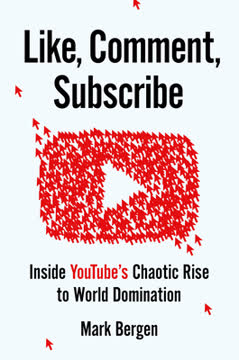Key Takeaways
1. YouTube's Genesis: From Dating Site to Video Scaffolding of the Internet
The video scaffolding of the internet.
Humble beginnings. YouTube started as a simple idea among three PayPal colleagues: Chad Hurley, Steve Chen, and Jawed Karim. Initially conceived as a dating site, the vision quickly evolved into a platform for sharing personal videos, driven by the desire to "broadcast yourself." This pivot, combined with the innovative use of Flash for embedding videos, set the stage for YouTube's explosive growth.
Key elements of early success:
- Ease of use: Making video uploads accessible to everyone, even their moms
- Timing: Capitalizing on the rise of digital video recording
- Focus: Shifting from dating to personal video sharing
- Innovation: Embedding videos on other websites
Outlasting competitors. While other consumer internet startups faded, YouTube endured, becoming the go-to destination for free moving pictures online. Its ability to adapt, innovate, and empower everyday people to become broadcasters fueled its rise to dominance.
2. Early Challenges: Copyright, Cash, and Content Control
Ok man, save your meal money for some lawsuits! ;)
Navigating legal minefields. From its early days, YouTube faced significant challenges, particularly regarding copyright infringement. The founders grappled with balancing the desire for open access with the need to respect intellectual property rights, leading to tense internal debates and the looming threat of lawsuits.
Financial struggles. The costs of hosting and streaming vast amounts of video content strained YouTube's resources. Steve Chen even maxed out his credit cards to keep the site afloat. Securing venture capital from Sequoia Capital provided a crucial lifeline, but the pressure to monetize the platform remained intense.
Content moderation. The founders also had to confront the darker side of user-generated content, including pornography, violence, and hate speech. Establishing clear guidelines and hiring moderators became essential for maintaining a safe and responsible online community.
3. The Rise of the YouTuber: Community, Creativity, and Commerce
It was a cool club for the kids that really weren’t that cool.
A new breed of celebrity. YouTube birthed a new generation of stars, individuals who connected with audiences through authentic, unfiltered content. These "YouTubers" built loyal communities around their personalities, skills, and passions, often bypassing traditional media gatekeepers.
Early stars and their impact:
- Brookers: Showcased the power of lip-sync and re-creation
- lonelygirl15: Pioneered the art of interactive storytelling
- Fred Figglehorn: Demonstrated the appeal of over-the-top comedy
From hobby to profession. As YouTube's partner program emerged, these early adopters began to monetize their content, transforming their passion projects into viable careers. This shift marked the beginning of the influencer marketing industry.
4. Google's Acquisition: Two Kings Collide, Visions Diverge
Today we have some exciting news for you. We’ve been acquired by Google.
A strategic move. Google's acquisition of YouTube in 2006 for $1.65 billion signaled the search giant's recognition of video's growing importance. The deal brought YouTube much-needed resources and infrastructure, while giving Google a dominant position in the online video market.
Clash of cultures. The merger also created tensions between YouTube's scrappy, freewheeling culture and Google's more structured, corporate environment. The YouTube team, accustomed to rapid innovation and experimentation, sometimes chafed under Google's bureaucratic processes and data-driven decision-making.
Diverging visions. While YouTube's founders prioritized user experience and creative freedom, Google focused on monetization and scalability. This difference in perspective led to ongoing debates about advertising, content moderation, and the platform's overall direction.
5. The Algorithm's Ascent: Data-Driven Decisions and Unintended Consequences
The YouTube brand is synonymous with online video, and we are focused on building a sustainable, profitable business.
The power of code. As YouTube matured, algorithms became increasingly central to its operations. These complex systems determined which videos were recommended to users, which creators were promoted, and which content was deemed suitable for advertising.
Unintended consequences. While algorithms aimed to optimize user engagement and revenue, they also had unintended consequences, such as:
- Creating echo chambers and filter bubbles
- Amplifying extreme or harmful content
- Rewarding clickbait and sensationalism
- Disadvantaging smaller or niche creators
The human element. YouTube's reliance on algorithms raised questions about the role of human judgment and editorial oversight. Some argued that the company needed to take a more active role in shaping its content ecosystem, while others defended the importance of algorithmic neutrality.
6. The Adpocalypse and Beyond: Navigating Scandals and Shifting Priorities
You guys get to completely run the ship. As long as we agree on this simple checkbox: grow users, videos, and views.
Brand safety concerns. In 2017, a series of scandals involving extremist content and inappropriate advertising placements triggered a major advertiser boycott, dubbed the "Adpocalypse." This crisis forced YouTube to re-evaluate its content moderation policies and prioritize brand safety.
New rules and restrictions. In response, YouTube implemented stricter guidelines, ramped up its moderation efforts, and developed new tools for advertisers to control where their ads appeared. These changes, while welcomed by some, also led to concerns about censorship and the demonetization of legitimate content.
The search for balance. YouTube struggled to balance the competing interests of advertisers, creators, and viewers. The company sought to create a platform that was both commercially viable and socially responsible, but this proved to be a difficult and ongoing challenge.
7. The Power of Personalities: Authenticity, Influence, and the New Media Landscape
People want to be seen, and YouTube is a stage for everyone to participate.
The rise of the influencer. YouTube's success hinged on its ability to empower everyday people to become media creators. These "influencers" built loyal followings by sharing their lives, passions, and expertise with the world.
Authenticity and relatability. Unlike traditional celebrities, YouTubers often cultivated a sense of authenticity and relatability, connecting with audiences on a personal level. This made them powerful marketing partners for brands seeking to reach specific demographics.
The new media landscape. YouTube's influencer culture disrupted the traditional media landscape, challenging established power structures and creating new opportunities for diverse voices to be heard. However, it also raised questions about the ethics of influencer marketing and the potential for exploitation.
8. The Dark Side of Openness: Extremism, Exploitation, and Ethical Quandaries
This is the rarest, purest, most unfiltered portrait of who we are as a people.
The price of freedom. YouTube's commitment to free expression came at a cost. The platform became a breeding ground for extremist ideologies, conspiracy theories, and harmful content, often targeting vulnerable groups.
Challenges of moderation. The sheer scale of YouTube's content made it difficult to effectively moderate. Algorithms struggled to distinguish between legitimate expression and hate speech, while human moderators faced burnout and trauma from exposure to disturbing material.
Ethical dilemmas. YouTube grappled with difficult ethical questions about the limits of free speech, the responsibility of platforms to protect their users, and the potential for unintended consequences. The company's decisions often sparked controversy and criticism from all sides.
9. The Search for Balance: Responsibility, Regulation, and the Future of YouTube
Give everyone a voice and show them the world.
A platform in crisis. By the late 2010s, YouTube faced a perfect storm of challenges, including:
- Growing concerns about misinformation and extremism
- Increasing regulatory scrutiny
- Eroding trust from advertisers and creators
- Intense competition from rival platforms
The Four Rs of Responsibility. In response, YouTube CEO Susan Wojcicki articulated a new framework for the company, based on four key principles: Remove, Raise, Reward, and Reduce. This approach aimed to strike a balance between free expression and responsible content moderation.
The future of YouTube. As YouTube navigates an increasingly complex and challenging landscape, its success will depend on its ability to adapt, innovate, and address the ethical dilemmas inherent in its business model. The company's choices will have far-reaching implications for the future of online media and the global information ecosystem.
Last updated:
FAQ
1. What is Like, Comment, Subscribe by Mark Bergen about?
- Comprehensive YouTube history: The book traces YouTube’s journey from a scrappy startup to a global media powerhouse, detailing its technological innovations, business challenges, and cultural impact.
- Focus on power and influence: Mark Bergen explores how YouTube drives Google’s dominance, shapes online culture, and influences politics, society, and the global media landscape.
- Insider perspectives: Drawing on interviews with founders, employees, creators, and industry insiders, the book reveals internal debates, leadership decisions, and the human stories behind YouTube’s growth and crises.
- Key moments and controversies: It covers pivotal events such as the Google acquisition, the Viacom lawsuit, the rise of the creator economy, and major content moderation controversies.
2. Why should I read Like, Comment, Subscribe by Mark Bergen?
- Understand digital media power: The book offers critical insights into how YouTube became a media giant influencing billions, making it essential for anyone interested in technology, media, or internet culture.
- Behind-the-scenes revelations: Bergen exposes internal conflicts, ethical dilemmas, and the challenges of balancing growth with responsibility at YouTube and Google.
- Context for current debates: The book provides valuable context for ongoing discussions about misinformation, radicalization, and platform regulation in the digital age.
- Human stories and transparency: Readers gain a nuanced view of the people, decisions, and cultural shifts that shaped YouTube’s evolution.
3. How did YouTube start, according to Like, Comment, Subscribe by Mark Bergen?
- Founders’ vision and origins: Chad Hurley, Steve Chen, and Jawed Karim, former PayPal employees, launched YouTube in 2005 to make video sharing easy for everyone, experimenting with ideas before settling on “broadcast yourself.”
- Early challenges: The founders faced technical hurdles, legal risks, and content moderation issues, operating from a cramped office and relying on word of mouth and MySpace for growth.
- Community and content: Early YouTube was defined by quirky, amateur videos and interactive features like comments and subscriptions, fostering a new kind of participatory media culture.
- Rapid growth and investment: Venture capital from Sequoia Capital stabilized finances, enabling YouTube to outpace competitors like Google Video.
4. What role did Google play in YouTube’s development, as described in Like, Comment, Subscribe?
- Acquisition and integration: Google acquired YouTube in 2006 for $1.65 billion, recognizing its dominance and potential despite legal and financial uncertainties.
- Managerial discipline and resources: Google brought advertising technology, legal expertise, and corporate structure, helping YouTube develop a sustainable business model.
- Cultural clashes: Tensions arose between YouTube’s startup ethos and Google’s corporate priorities, affecting decision-making and company culture.
- Policy and legal influence: Google’s leadership shaped YouTube’s approach to copyright, censorship, and global regulation, navigating complex legal and ethical challenges.
5. How did YouTube’s algorithm and business model evolve in Like, Comment, Subscribe by Mark Bergen?
- Shift to watch time: In 2012, YouTube’s algorithm began prioritizing “watch time” over views, encouraging longer, more engaging videos and changing content creation dynamics.
- Expansion of monetization: The YouTube Partner Program democratized ad revenue, allowing millions of creators to earn money but also introducing challenges like clickbait and system gaming.
- Rise of MCNs: Multichannel networks (MCNs) emerged to manage and monetize groups of creators, professionalizing content but also creating new power dynamics and contractual complexities.
- Algorithmic influence: The recommendation engine, powered by advanced AI, shaped what billions watched, often promoting sensational or extreme content to maximize engagement.
6. What were the major legal and content challenges YouTube faced, according to Mark Bergen?
- Copyright battles: YouTube faced massive lawsuits, most notably from Viacom, over copyright infringement, leading to the development of Content ID and reliance on DMCA safe harbor provisions.
- Content moderation dilemmas: The platform struggled to balance free expression with the need to remove harmful or inappropriate videos, with moderators facing traumatic content and unclear guidelines.
- Political and social controversies: YouTube became a battleground for global events, such as the Arab Spring and the “Innocence of Muslims” trailer, sparking debates about censorship and platform responsibility.
- Advertiser boycotts: Incidents like the Adpocalypse forced YouTube to tighten content policies and demonetize many creators to appease advertisers.
7. How did YouTube’s algorithm influence content, culture, and society, as detailed in Like, Comment, Subscribe?
- Watch time as a driver: The algorithm prioritized videos that kept viewers engaged longer, incentivizing creators to produce longer, more sensational, or provocative content.
- Echo chambers and radicalization: The recommendation system often led users into “rabbit holes” of increasingly extreme or niche content, contributing to polarization and the spread of conspiracy theories.
- Impact on creators: Creators adapted their strategies to satisfy algorithmic preferences, sometimes at the cost of quality or well-being, leading to burnout and formulaic content.
- Societal consequences: The algorithm’s focus on engagement sometimes amplified misinformation, fringe views, and addictive viewing patterns, raising questions about responsibility and control.
8. What were the major controversies and crises YouTube faced, according to Like, Comment, Subscribe by Mark Bergen?
- Adpocalypse and advertiser boycotts: Major brands pulled ads after discovering their commercials ran alongside extremist or inappropriate videos, leading to stricter monetization rules and content policies.
- Elsagate and disturbing kids’ content: The platform was flooded with bizarre and sometimes exploitative children’s videos, prompting public outcry and massive content removals.
- Creator scandals: High-profile creators like PewDiePie and Logan Paul sparked controversies with offensive or insensitive content, forcing YouTube to reconsider moderation and accountability.
- Political and social backlash: YouTube was accused of promoting extremist content, spreading misinformation, and exhibiting political bias, leading to ongoing scrutiny and criticism.
9. How did YouTube’s relationship with creators and the creator economy change, according to Mark Bergen?
- Early empowerment: Initially, YouTube allowed creators to monetize freely, fostering a diverse and vibrant creator economy with minimal interference.
- MCNs and corporate influence: The rise of MCNs professionalized content creation but also led to exploitation and conflicts, prompting YouTube to reclaim more control over monetization.
- Stricter monetization rules: In response to advertiser concerns, YouTube introduced tougher eligibility criteria, reducing the number of creators earning ad revenue and causing frustration.
- Creator burnout and adaptation: Increasing demands for frequent, ad-friendly content led to burnout, creative tensions, and shifts in how creators approached their work.
10. What role did Susan Wojcicki play in YouTube’s development, as described in Like, Comment, Subscribe?
- Leadership transition: Susan Wojcicki, a longtime Google executive, became YouTube’s CEO in 2014, bringing a focus on monetization, advertiser relations, and corporate structure.
- Balancing growth and responsibility: She set ambitious goals for watch time and revenue while grappling with content moderation challenges and cultural shifts on the platform.
- Crisis management: Wojcicki led YouTube through major controversies, including the Adpocalypse and Elsagate, and emphasized algorithmic responsibility and the “Four Rs of Responsibility.”
- Internal governance: She established leadership groups like the “Roomba meetings” to debate content decisions, reflecting the complexity of governing a vast platform.
11. How did YouTube handle content moderation, responsibility, and internal challenges, according to Mark Bergen?
- AI and human moderation: YouTube increasingly relied on AI and machine learning to detect problematic content, but scale and nuance made perfect moderation impossible, leading to both over-removal and under-enforcement.
- Outsourced moderation workforce: The company expanded its moderation by outsourcing to contractors, who faced difficult and sometimes traumatic work conditions.
- “Four Rs of Responsibility”: YouTube’s guiding principles became removing rule-breaking content, raising authoritative sources, rewarding trusted creators, and reducing borderline content.
- Employee activism: Internal challenges included employee protests over sexual harassment, diversity, and pay equity, highlighting tensions between public values and internal realities.
12. What are the key takeaways and lessons from Like, Comment, Subscribe by Mark Bergen?
- YouTube’s dual nature: The platform is both a democratizing force for creativity and a machine that can amplify harmful content and societal ills, driven by faith in technology and algorithms.
- Algorithmic power and pitfalls: YouTube’s recommendation system shapes what billions watch, often prioritizing engagement over quality or truth, with significant cultural and political consequences.
- Business and culture tensions: The evolution of YouTube involved constant negotiation between creators, advertisers, regulators, and corporate managers, with no easy solutions.
- Future of media: YouTube exemplifies the shift to on-demand, user-generated, and algorithmically curated content, raising ongoing questions about accountability, regulation, and the societal impact of digital platforms.
Review Summary
Like, Comment, Subscribe receives mixed reviews, with an average rating of 3.73 out of 5. Many readers find it an engaging and insightful history of YouTube, praising its comprehensive coverage of the platform's evolution, business challenges, and societal impact. Some appreciate the behind-the-scenes look at Google's management and content moderation struggles. Critics argue the book is too long, dry in parts, and lacks access to key figures. Overall, readers value the book's exploration of YouTube's cultural significance and its complex relationship with creators, advertisers, and society.
Similar Books
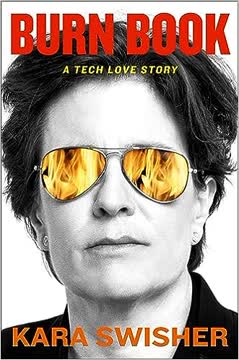
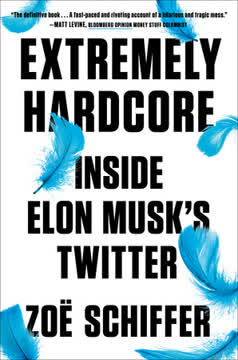
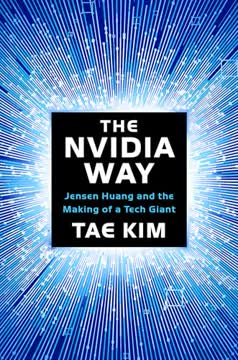
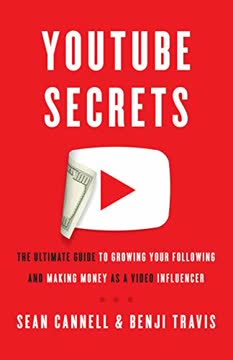
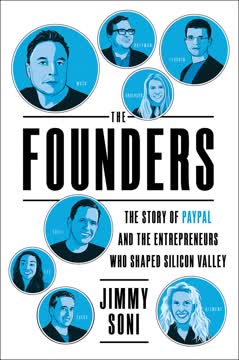
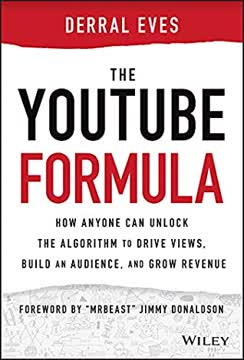
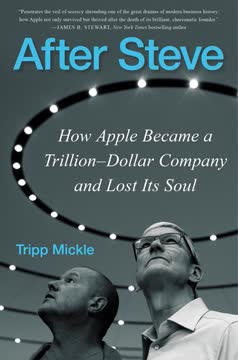
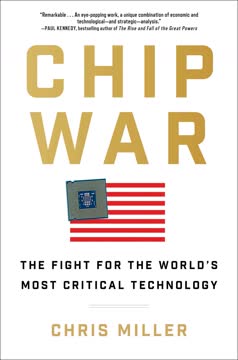
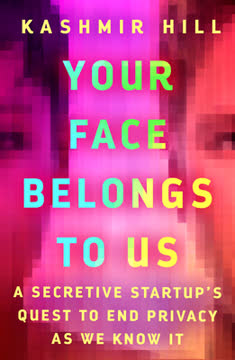
Download PDF
Download EPUB
.epub digital book format is ideal for reading ebooks on phones, tablets, and e-readers.
